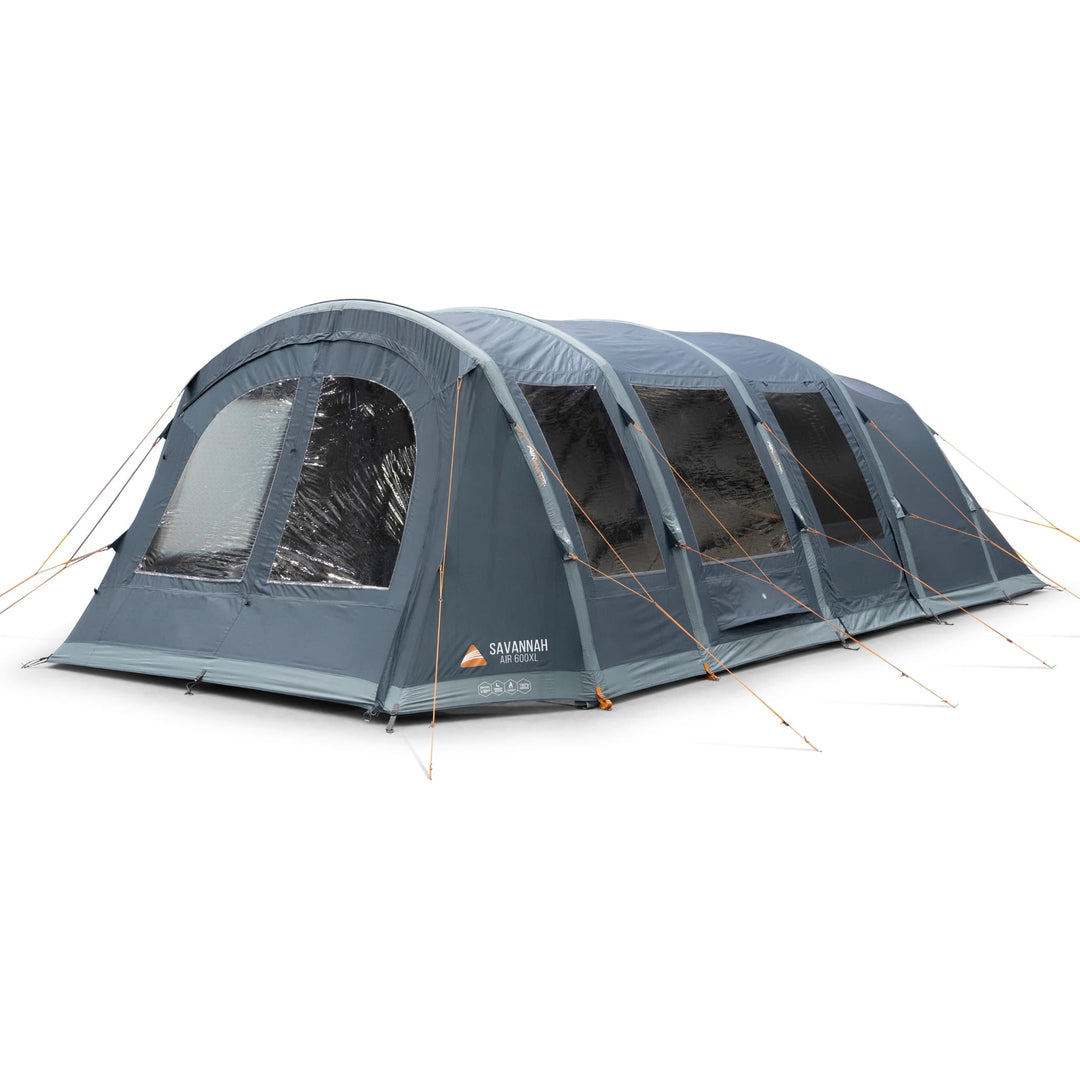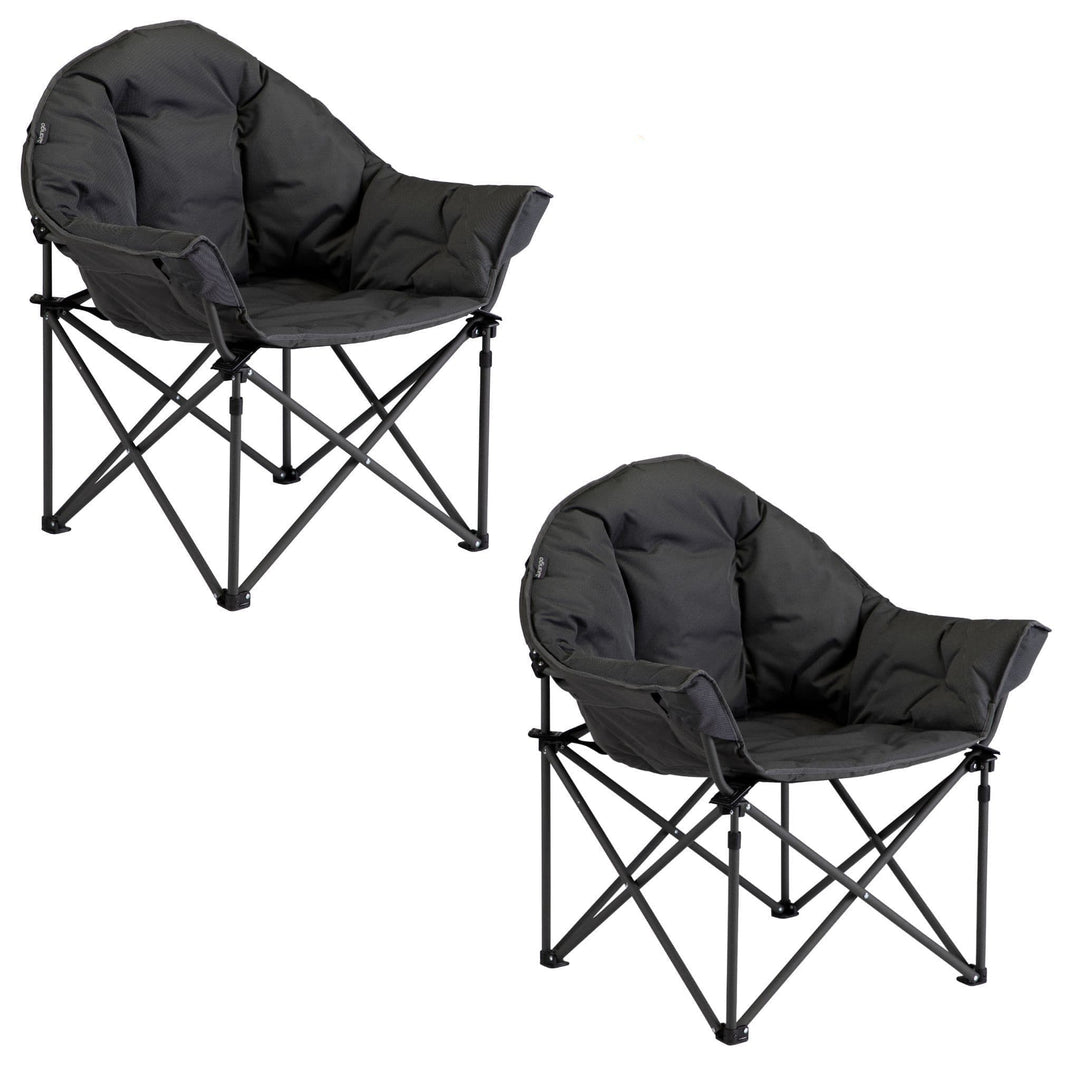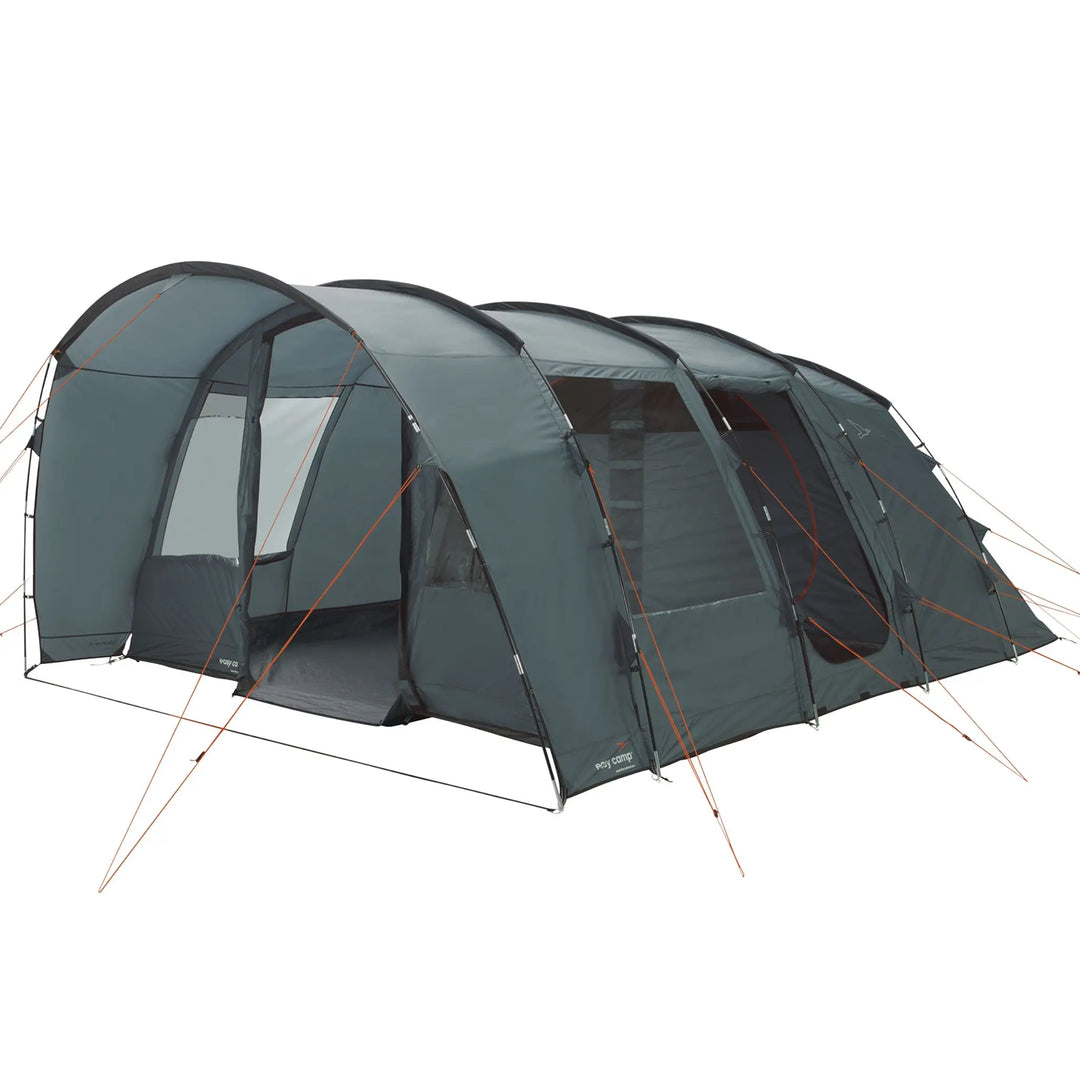Buying Guide for Camping Stoves and Cookers
When it comes to camping in the UK, a reliable stove is as essential as your tent or sleeping bag. As seasoned camping enthusiasts, we've spent countless nights under the stars, testing various camping stoves in the unpredictable British weather. Whether you're planning a weekend getaway in the Lake District or a multi-day trek through the Scottish Highlands, the right stove can make all the difference in your outdoor culinary experience.
Choosing the perfect camping stove isn't just about boiling water quickly; it's about finding a balance between portability, fuel efficiency, and cooking capability. Our guide breaks down the key factors to consider, ensuring you make an informed decision tailored to your adventures. With our extensive expertise and hands-on experience, we're here to help you navigate the myriad of options available, so you can enjoy a warm meal wherever your journey takes you.
What Is A Camping Stove?
A camping stove is a portable cooking device designed for outdoor use, especially during camping trips. These stoves are compact and lightweight, making them ideal for hiking, backpacking, and any outdoor adventure. View our range of camping stoves.
How Does A Gas Stove Work?
Gas camping stoves utilise liquefied gas as fuel, typically a mix of butane and propane. This gas evaporates as it exits the canister, reaching the burner in a gaseous state. To operate the stove safely, attach it to the gas canister and ignite the burner. Different gas canisters exist, requiring unique attachment methods—pierced, screwed-on, or clipped-on. Our range of compact and portable stoves ensures an optimal cooking experience while exploring nature.
Types of Camping Cookers

Double Burner and Grill
A double burner and grill is a type of camping or outdoor cooking equipment that combines two burners for cooking with a grill surface for grilling food. This versatile setup allows campers and outdoor enthusiasts to prepare a variety of meals, from boiling water and cooking pasta to grilling burgers and vegetables.
Gas Bottle: Double burner and grill cookers typically use the larger gas bottles with a regulator - Camping Gaz 907 bottles or Calor Gas
Benefits of a Double Burner and Grill:
- Versatility: The primary advantage of a double burner and grill is its versatility. You can perform a wide range of cooking tasks on a single piece of equipment, reducing the need for multiple cooking devices. This is particularly useful when you have limited space or want to simplify your outdoor cooking setup.
- Time Efficiency: With two burners and a grill, you can cook multiple items simultaneously. For example, you can boil water for coffee while grilling bacon and eggs on the side. This saves time and allows you to serve hot meals more quickly.
- Varied Cooking Methods: You have the flexibility to use different cooking methods. Boil, simmer, sauté, or fry on the burners, while grilling lets you achieve that distinctive grilled flavor and texture. This variety makes it easier to prepare a diverse menu while camping.
Negatives of a Double Burner and Grill:
- Size and Weight: Double burner and grill combos can be relatively bulky and heavy compared to single-purpose camping stoves. This can make them less suitable for backpacking or situations where weight and space are crucial considerations.
- Cost: Double burner and grill units are typically more expensive than basic single-burner stoves. If you're on a tight budget, this might be a drawback.
- Maintenance: Cleaning and maintaining the grill component can be more challenging than caring for a basic stove. The grill grates may need thorough cleaning to remove grease and food residue.

Single-Burner Camping Stoves
A single-burner camping stove is a portable cooking device designed for outdoor use. As the name suggests, it typically features a single burner for cooking food and boiling water.
Gas Bottle: MSF-1A butane cartridge
Benefits of a Single-Burner Camping Stove:
- Portability: Single-burner camping stoves are compact and lightweight, making them easy to transport in a backpack or camping gear. They are ideal for outdoor campers who require a basic and easily transportable cooking solution.
- Simplicity: These stoves are easy to set up and use. They often have a straightforward design with minimal components, making them user-friendly, especially for beginners.
- Fuel Efficiency: Single-burner stoves are generally fuel-efficient, providing a reliable source of heat for cooking. They are designed to optimise the use of fuel, such as propane, butane, or liquid fuel, ensuring that you can prepare meals efficiently.
- Quick Cooking: Many single-burner stoves offer rapid heating and boiling times, allowing you to cook meals and boil water quickly. This can be especially important when you're hungry and need a hot meal without delay.
- Cost-Effective: Single-burner camping stoves are often more affordable than larger, multi-burner models. They provide a cost-effective solution for solo campers or small groups.
Negatives of a Single-Burner Camping Stove:
- Limited Cooking Capacity: The primary drawback of single-burner stoves is their limited cooking capacity. With only one burner, you can cook or heat one dish at a time, which may not be suitable for larger groups or complex meals.
- Basic Features: Single-burner stoves tend to have fewer features compared to larger, more advanced camping stoves. For example, they may lack adjustable flame controls, built-in windshields, or integrated grills.
- Fuel Dependency: These stoves rely on specific types of fuel, such as propane canisters or liquid fuel bottles. If you run out of fuel during your trip, it can be challenging to continue cooking until you can obtain more fuel.
- Stability: Some single-burner stoves can be less stable than larger models, especially on uneven or rocky surfaces. Ensuring a stable cooking platform may require additional setup.
- Cooking Space: The limited space on a single-burner stove can be a challenge when using larger cookware or multiple pots and pans. This can make meal preparation less convenient.

Backpacking Stoves
A backpacking camping stove is a portable and lightweight cooking device specifically designed for backpackers and outdoor enthusiasts who need a compact and efficient way to cook meals while on the trail or in remote locations. These stoves are intended for minimalists who prioritize portability, weight savings, and simplicity in their camping gear.
Gas canisters - Screw on butane propane mix
Benefits of a Backpacking Camping Stove:
- Portability: These stoves are incredibly portable and designed to be carried in a backpack. They are compact and lightweight, making them ideal for backpackers and hikers who need to minimize the weight and volume of their gear.
- Efficiency: Backpacking stoves are engineered for fuel efficiency. They are designed to use a minimal amount of fuel to achieve maximum heat output, allowing users to conserve fuel during their trips.
- Quick Setup: These stoves are typically easy to set up and ignite, providing a quick and hassle-free way to start cooking. Many models come with integrated ignition systems, eliminating the need for matches or lighters.
- Compact Cooking: While compact, these stoves are capable of boiling water and cooking simple meals. They are suitable for single or dual users who need basic cooking capabilities while camping.
Negatives of a Backpacking Camping Stove:
- Limited Cooking Capacity: The primary drawback of backpacking stoves is their limited cooking capacity. They typically have a single burner, which means you can only cook one dish at a time. This may not be ideal for larger groups or complex meals.
- Basic Features: These stoves often have minimal features compared to larger camping stoves. While some models have adjustable flame control, integrated windshields, or pot supports, they may lack the conveniences of larger stoves.
- Stability: Some backpacking stoves can be less stable than larger models, especially when placed on uneven surfaces. Careful setup and balancing may be necessary.
- Cooking Space: The limited space on a backpacking stove can be restrictive when using larger cookware or multiple pots and pans. This may make meal preparation less convenient for certain dishes.

Electric Griddles
A camping electric griddle is a portable cooking appliance designed for outdoor use, particularly when camping, campervanning when electric hook up is available. It consists of a flat cooking surface that is heated by electricity, allowing you to cook a variety of foods like pancakes, eggs, bacon, burgers, and vegetables. These griddles are specifically designed to be used in outdoor settings and are usually more compact and portable than their indoor counterparts.
Power Source: Mains electric
Benefits of a Camping Electric Griddle:
- Convenience: Camping electric griddles are easy to use. Just plug them into a power source, set the desired temperature, and they heat up quickly, providing a consistent and even cooking surface.
- Versatility: The flat and spacious cooking surface of a griddle allows you to cook multiple items at once or prepare larger meals. This versatility makes it suitable for group camping or when you want to make a variety of dishes.
- Even Cooking: Electric griddles typically have a consistent heat distribution, resulting in even cooking across the entire surface. This ensures that your food is cooked uniformly without hot spots.
- Easy Cleanup: Many camping electric griddles come with non-stick cooking surfaces, making them easy to clean. This is especially convenient when camping, where access to running water may be limited.
- No Open Flame: Unlike traditional camping stoves that use gas or open flames, electric griddles are safer in terms of fire hazards. They also eliminate the need to carry and manage fuel canisters.
Negatives of a Camping Electric Griddle:
- Power Source Dependency: To use a camping electric griddle, you need access to a power source, such as a campground electrical hookup. This can limit your camping locations as you will need to go to sites with mains hookup points.
- Size and Weight: Camping electric griddles can be bulkier and heavier than other camping cooking equipment, which may not be ideal for backpackers or those with limited space in their camping setup.
- Outdoor Exposure: Electric griddles are designed for outdoor use but should be protected from rain and moisture to avoid electrical hazards and damage to the appliance. This means you might need to use them under a shelter or awning.

Camping Induction Hobs
A camping induction hob is a portable cooking appliance designed for outdoor use, particularly during camping trips, RV adventures, or other outdoor activities. It utilises electromagnetic induction technology to generate heat, allowing you to cook food on a flat, smooth cooking surface. These hobs are specifically designed to be used in outdoor settings and are known for their efficiency and safety features.
Benefits of a Camping Induction Hob:
- Speed and Precision: Induction hobs heat up quickly and offer precise temperature control. You can achieve high or low heat levels instantly, making them ideal for various cooking techniques.
- Safety: Induction hobs are considered one of the safest cooking methods for outdoor use. They do not produce open flames or hot surfaces that can cause burns or fires. The heat is generated directly in the cookware, and the cooking surface remains cool to the touch.
- Efficiency: Induction cooking is highly efficient, as it heats only the cookware and the food inside it. There is minimal wasted heat, making it energy-efficient and reducing fuel consumption during camping.
- Even Cooking: The even and consistent heat distribution of induction hobs ensures that food is cooked uniformly without hot spots. This is particularly useful for preparing delicate dishes that require precise temperature control.
- Easy Cleanup: Induction hobs often feature smooth glass or ceramic surfaces that are easy to clean. Spills and splatters can be wiped away with minimal effort.
Negatives of a Camping Induction Hob:
- Power Source Dependency: To operate an induction hob, you need access to a reliable power source, such as a campground electrical hookup. This can limit your camping locations as you will a site with an electric hookup point.
- Cookware Compatibility: Induction hobs require magnetic cookware with a ferrous (iron-based) bottom to function properly. Not all camping cookware may be compatible, so you may need to invest in suitable pots and pans.
- Weight and Size: Camping induction hobs can be bulkier and heavier than some other portable cooking equipment, which may not be suitable for backpackers or those with limited space in their camping setup.
- Cost: Camping induction hobs can be more expensive than other camping stoves or cooking options due to their advanced technology.
What Gas Do I Need To Run A Stove?
Selecting the right gas for running your camping stove is crucial for efficiency and safety. Understanding the types of gas canisters available helps you make informed decisions when planning your outdoor cooking setup.
Refillable Gas Cylinders
Refillable gas cylinders come in butane or propane, provided by brands like Campingaz and Calor Gas. Most portable stoves accommodate these cylinders, depending on the regulator used. Opting for butane or propane usually depends on temperature conditions and cooking needs.
Pierceable Gas Canister
Pierceable canisters offer a cost-effective, lightweight choice for short-term camping trips. These canisters attach only to specific stoves, often sold together, and can't be detached until empty. Ideal for minimalist camping stoves, pierceable options suit short getaways.
Threadable Gas Canister
Threadable canisters, a reusable option for repeated trips, attach with a threaded point that fits most portable stoves. Commonly found at campsites, these self-sealing, lightweight canisters can also have a clip-on alternative, adding versatility to camping cooking equipment.
Resealable Gas Canister
Often referred to as 'aerosol canisters', resealable options are economic and compatible with bistro-style stoves. Light and user-friendly, these canisters can refill larger ones, offering a compact solution for various camping stove setups and fuel needs.
What To Consider When Buying A Gas Stove
Selecting the right gas camping stove enhances outdoor cooking experiences. Let's explore crucial factors to consider.
-
Portability
Portable stoves prove essential for backpacking or frequent camping. Compact designs and lightweight features facilitate easy transportation. Models with foldable legs and handles offer added convenience. -
Stove Burners
Each gas stove comes with unique burner configurations. For solo adventures, single-burner stoves suffice. However, double burner and grill combinations provide flexibility for group cooking and varied meals. -
Fuel Type
The choice of camping stove fuel types impacts efficiency and environmental considerations. Multi-fuel stoves support versatility by permitting different fuel sources, while dedicated gas models simplify usage. -
Cooking Capacity
Assess cooking needs based on group size and meal complexity. Larger families might prefer stoves with multiple stove burners. Consider the cooking surface area and heat output when planning camping cooking equipment. -
Durability
Robust materials like stainless steel and cast aluminium withstand outdoor conditions. In selecting a gas camping stove, prioritise those with durable construction to ensure longevity and reliability.
By considering these factors, you ensure that your chosen gas stove meets your specific camping needs, whether it's a compact camping stove for a weekend trip or a more comprehensive setup for extended adventures.
Which Gas Is Best? Butane Or Propane Gas?
Choosing the right camping stove fuel enhances efficiency and safety. Butane and propane are popular options for gas camping stoves, each with distinct advantages.
Butane Gas: This fuel is ideal for mild weather conditions. It's compatible with lightweight camping stoves, making it suitable for backpacking trips. Butane burns cleanly, reducing emissions and soot build-up, an important factor when selecting camping cooking equipment. However, its performance decreases in cold temperatures, affecting the efficiency of stove burners.
Propane Gas: Known for its capability to operate in a wide range of temperatures, propane is reliable in colder climates. It's compatible with most gas camping stove setups, including double burner and grill combinations, due to its higher pressure output. Propane is slightly heavier than butane, which might be a consideration for those seeking ultra-portable stoves.
Your choice between butane and propane depends on factors like climate and stove setup. Butane suits warmer conditions and compact camping stove designs, while propane offers versatility across varied temperature ranges.
How To Dispose Of A Gas Canister
Proper disposal of gas canisters is crucial for safety and environmental conservation. After using our camping stoves, you ensure gas canisters are completely empty. This prevents any potential hazards during disposal.
Next, you search for local recycling centres that accept gas canisters. Many locations have facilities specifically equipped to handle such items safely. Engaging with these centres aligns with our commitment to sustainable camping practices.
If access to a recycling centre is limited, you contact your local waste management authority. They often provide guidance on how and where to safely dispose of camping stove fuel types, including gas canisters.
Avoid puncturing or incinerating canisters. Both actions can lead to dangerous explosions or release harmful gases. Through these practices, you help protect the environment while enjoying our time in the great outdoors.
Camping Stove And Gas Canister Safety
Choosing the right camping stove is just the beginning of ensuring a safe and enjoyable outdoor cooking experience. You must also prioritise the safe handling and disposal of gas canisters. It's crucial to verify that canisters are entirely empty before disposal and to seek out local recycling centres equipped for this purpose. If such options are unavailable, contacting local waste management authorities for guidance is a wise move. By following these practices, you not only protect yourselves but also contribute to environmental conservation. Let's you enjoy your camping holiday responsibly, ensuring safety and sustainability at every step.
Frequently Asked Questions
What is the primary benefit of using a camping stove while camping in the UK?
A camping stove allows for convenient and efficient cooking outdoors. It provides the ability to cook warm meals, enhancing the camping experience, especially in unpredictable UK weather. With a reliable camping stove, you can enjoy hot meals, which are crucial for energy and comfort during your outdoor adventures.
How do gas camping stoves work?
Gas camping stoves use a mix of butane and propane as fuel. The fuel is stored in canisters, which are connected to the stove. When ignited, the gas burns to produce a flame, allowing you to cook. Different stoves have unique attachment methods for gas canisters, ensuring easy setup and use.
What are the types of gas canisters available for camping stoves?
There are primarily three types of gas canisters: pierceable, threadable, and resealable. Pierceable canisters are ideal for short-term use, threadable canisters are reusable and commonly used, and resealable canisters are economically viable, usually compatible with bistro-style stoves.
How important is portability when choosing a camping stove?
Portability is crucial, especially for backpacking. A compact and lightweight design ensures the stove is easy to carry and pack without adding unnecessary weight. For campers who travel light, choosing a portable stove means more efficient travel and ease of setup at the campsite.
Which type of burner should I choose for my camping needs?
The choice depends on the group size and cooking requirements. Single-burner stoves are ideal for solo trips, offering simplicity and portability. Double burners and grill combinations suit group cooking, providing flexibility to prepare multiple dishes simultaneously.
What fuel type is best for a camping stove?
Multi-fuel stoves offer versatility, allowing usage with various fuel types. However, dedicated gas models simplify operation. The choice depends on your camping style and the conditions you'll face. Always consider aspects like climate and campfire restrictions when deciding on fuel type.
Should I choose butane or propane gas for my camping stove?
Butane is suitable for mild weather, offering clean burning but losing efficiency in colder climates. Propane functions effectively in a wider temperature range, making it ideal for colder conditions. Choose based on your climate and stove design preference.
How should I dispose of empty gas canisters safely?
Ensure gas canisters are completely empty before disposal. Locate a local recycling centre equipped for handling such items. If recycling is unavailable, contact local waste management for guidance. Never puncture or incinerate canisters, as this poses safety and environmental risks.












